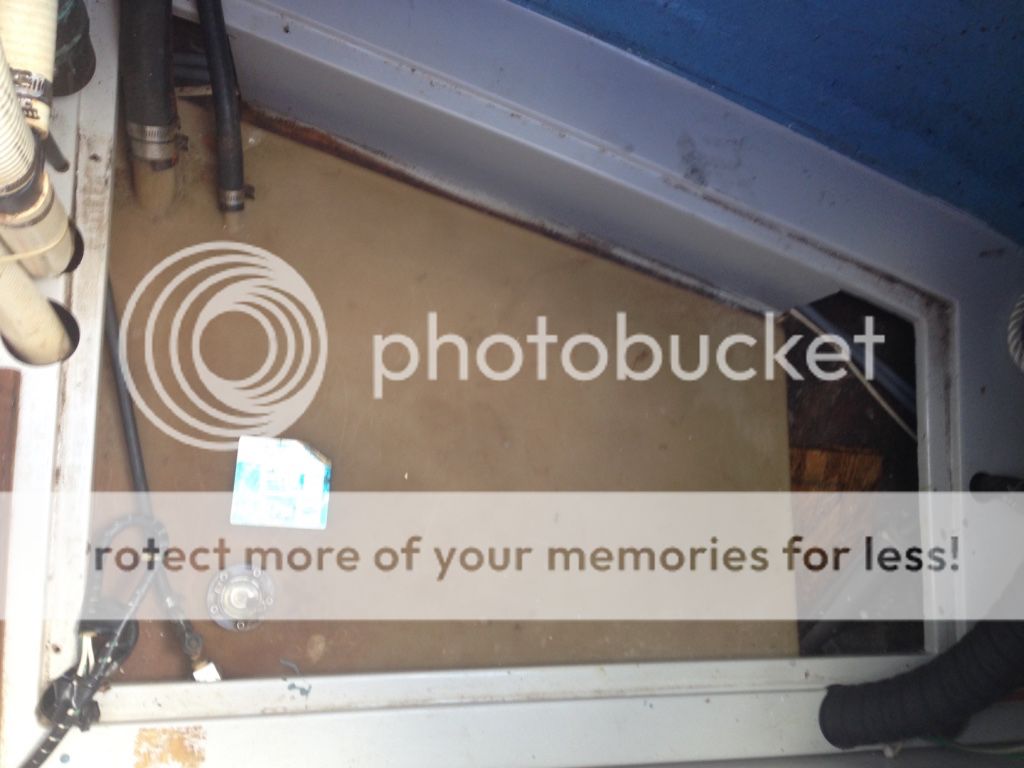This might help make it at least a little easier:
Prepping to do any work on any part of the sanitation system starts with thoroughly rinsing out the whole system with plenty of clean water before taking anything apart. Pump out the holding tank VERY thoroughly with lots of clean fresh water. Adding Raritan C.P. to the rinse will remove most of the odor. Rinse out the toilet, all hoses and any macerators or manual pumps, VERY thoroughly with lots and lots of clean water. If the hoses REALLY stink, it may help to smear a healthy glob of Vicks Salve under your nose before you start. If possible, schedule your project for a time when you can do it on a cool day. And be sure to create plenty of ventilation, especially in any closed areas in the bilge.
Put plastic garbage bags or disposable aluminum pans under hose connections to catch any spills. (Warming hoses with a blow dryer makes them easier to remove and replace). Have a couple of rolls paper shop towels (super heavy duty paper towels) handy...you'll need them.
Now you’re ready to start the real work.
Remove the highest hose connection first to minimize drips, and stick plugs (available from any hardware store) in the ends of the hose. Work on only one hose at a time...and take each section of hose all the way off the boat as soon as you get it loose (your dock mates may insist you take it all the way off the dock!). When taking a hose off a fitting, have a pan or a plastic trash bag under the connection to catch any drainage. Have lots of shop towels handy to mop up what misses the pan.
Removing hoses becomes much easier if you’ll heat them with a heat gun (I’ve always preferred using a blow dryer) to soften them up before trying to work them off. Unless you want to also replace all the fittings, do not pry them off with a screwdriver or saw them off...the screwdriver blade will dimple the fitting, the saw will cut into it, and the new hose won’t seal.
It’s often much easier to pull new hose through inaccessible places if you connect it to the old hose and pull the new through as you pull the old out. Use a male-to male connector. Use PVC cement to secure the ends of both hoses onto it. Do not use duct tape…it won’t hold if you have to pull hard. Do not hose clamps or anything that can get hung up as you pull the hose through, and be sure to butt the ends of the hose tightly together to create the smoothest uninterrupted surface possible. After you’ve pulled it through, cut the new hose cleanly behind the connector and dispose of the old hose and connector.
To put the new hose onto fittings, heat the hose with a blow dryer (use a heat gun only if you really know what you’re doing with one) to soften it. Be careful, and be patientl! You only want to warm the hose enough to slide it onto a fitting; overheating hose can damage it, causing collapse or tearing. Smear a little dish soap (or even better, K-Y surgical jelly; it’s much slipperier than soap and water soluble, so it dries out) on the inside of the hose and the outside of the fitting to lubricate the connection. Don’t use Vaseline or any grease...and don’t use ANY cement or sealant...only Teflon tape on the threaded end of tank fittings. Double clamp all the hose connections with screws on opposite sides of the hose, or at least 90 degrees apart if 180 degrees isn’t possible.
Important note: Plastic tank fittings are NPT (National Pipe Thread) standard, which are slightly (so slightly that it’s not noticeable to the naked eye in such a short piece) tapered. They’re also self-sealing. So when threading fittings into the tank, tighten only one turn past “hand tight,” plus enough to aim an elbow in the direction needed, no more. If the fitting leaks around the threads, wrap them with a couple of layers of Teflon tape. Over-tightening can result in a cracked female tank ftting, if not immediately, within a short time. That little “ping” sound is the last thing you want to hear coming from the tank.




